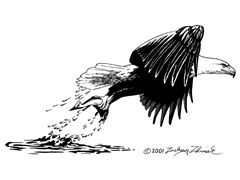Extension Wildlife & Fisheries Specialists Conferences

Triennial National Wildlife and Fisheries Extension Specialists Conference: 11th (2006)
Date of this Version
October 2006
Document Type
Article
Abstract
Residential developments have a huge impact on natural resources and wildlife, and sustainable or “green” communities are beginning to be built throughout the United States with goals to conserve wildlife habitat, to create healthy lifestyles, and to promote a sense of community. Buzzwords can be heard in the media and in town meetings: sustainability, smart growth, new urbanism, low impact development, and conservation subdivisions. Ultimately, with one stroke of a pen, developers and policymakers can determine how a community will look and feel for many years to come. Plus, citizens make day-to-day decisions that determine whether a community operates as intended by policymakers and developers. How can wildlife professionals help homeowners, developers, and policymakers make informed decisions about building and managing wildlife-friendly communities? We briefly present some outreach efforts as part of a new program at the University of Florida called the Program for Resource Efficient Communities (PREC – http://energy.ufl.edu). PREC has been actively partnering with several developers and build/design professionals to create “model” resource-efficient communities. Working with two master-planned Florida communities, Madera and the Town of Harmony, we have encountered both successes and failures. In this paper, we explore how wildlife professionals can partner with developers, policymakers, and homeowners. In particular, we focus on ways to engage developers and policymakers. Reaching these audiences has not been a tradition for wildlife professionals, but developers and policymakers play a major role in creating healthy, wildlife-friendly communities.


Comments
Published in Proceedings, 11th Triennial National Wildlife & Fisheries Extension Specialists Conference, October 14-18, 2006, Big Sky, MT.